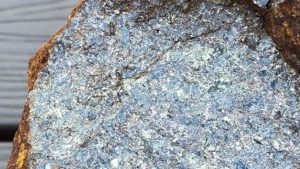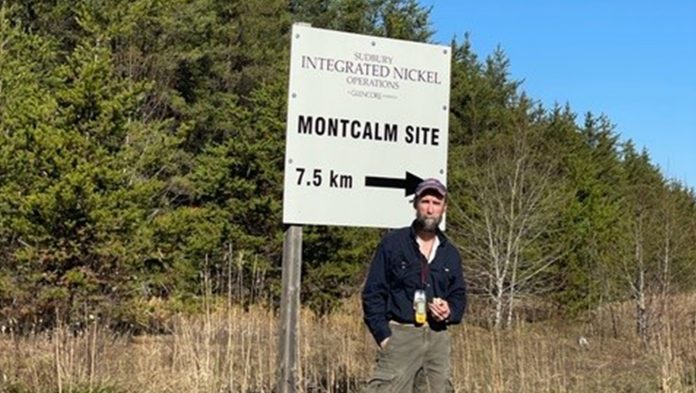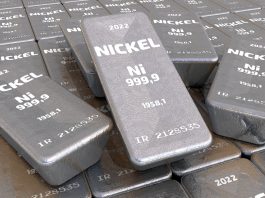Mink Ventures is forging a path to success in the mineral-rich Timmins Nickel District of Ontario, exploring two prospective nickel, copper, and cobalt projects.
Mink Ventures Corporation (TSXV:MINK) is a Canadian junior exploration battery metals company with a strategic portfolio of nickel (Ni), copper (Cu), and cobalt (Co) sulphide projects in the Timmins Nickel District, Ontario, Canada. Mink was created to capitalise on battery metals opportunities. The team behind it has extensive experience in the mineral exploration business and deep roots and relationships in capital markets. The company began trading on the TSX Venture Exchange, under the symbol MINK, in January 2023 after completing the acquisition of its Montcalm Ni Cu Co project.
In July 2023, the company acquired a second Ni Cu Co sulphide project known as Warren (14 mining patents), located approximately 35km away along the same Montcalm Mine Road. In September, the company expanded the Warren project by acquiring the Warren North claims and purchased 0.5% of the 1.5% NSR on the patents in an accreditive exchange for 225,000 MINK shares, while concurrently staking the adjacent Warren East claims. The Warren project area now covers 1,010 hectares with multiple mineralised zones and targets with discovery potential.
Despite the tumultuous markets and very weak environment for raising capital for junior exploration companies in 2023, Mink’s team has raised $1.28m in equity and received a non-dilutive Ontario Junior Exploration Program (OJEP) grant of $77,405 towards its critical minerals exploration projects. As a result, the company has completed two initial drill programs at Montcalm and developed significant new targets for future drilling by using new geophysical surveys which can identify both disseminated and massive sulphides with clarity and at greater depths than achieved by historical surveys. The company will also begin drill testing the newly acquired Warren project in early January.
Mink’s projects
Mink’s polymetallic critical minerals projects are ideally situated with low geopolitical risk factors. Ontario is a top-ranked Canadian mining jurisdiction with a clearly articulated permitting process. The province is mineral-rich with a wide range of deposits that significantly contribute to the economy and the local communities.
Polymetallic deposits typically offer better value-per-ton, especially when located in established mining camps with existing infrastructure. Access to infrastructure for Mink’s projects is exceptional, and more so given the proximity of Warren and Montcalm along the Montcalm Mine Road. There is an active green hydropower line running to the Montcalm Mine adjacent to Mink’s project, an all-weather access road which Glencore maintains, and numerous access points to both the Montcalm and Warren properties through forestry roads which contribute significantly to improved logistics and cost effective exploration.
Montcalm Project: Nickel, copper, and cobalt
Mink has just begun evaluating its sizeable Montcalm project, which would be incredibly challenging and costly to assemble in the current environment, where prospective critical mineral claims are scarce. The entire Montcalm Gabbro Complex (MGC) covers approximately 120km2. Mink controls 39.6km2. The gabbro phase of MGC hosting Glencore’s former Montcalm Mine is approximately 15km2. Mink controls ten square kilometres of the prospective geological unit, and Glencore controls five square kilometres within the mine boundary. The historical exploration and drill density on Mink’s project (48 holes over 40km2) on a project of this scale, adjacent to a high-grade nickel sulphide mine, has been a sporadic effort at best. As such, Mink has an incredible hunting ground for additional lenses of mineralisation. From past exploration and mining, it is known that the deepest nickel lenses at the Montcalm Mine are present well beyond 300m below the surface. Only recently have modern airborne geophysical systems been able to penetrate deeper than this.
Fortunately, with new technology in the tool kit, the odds of finding new deposits have improved greatly. Mink has benefitted significantly from the work of previous operators who left numerous EM targets unexplained or untested in historical holes; these holes can now be probed with new 3D borehole IP technology. IP can assist in locating disseminated, stringer, and massive sulphides. Historical work at the mine site demonstrated that in addition to the higher-grade Ni Cu Co lenses, there is potential for disseminated mineralisation.
In Mink’s initial exploration program at Montcalm, the company vetted the capability of new geophysical technology and demonstrated that both 3D borehole IP and surface IP surveys are cost-effective target development tools. They discovered several previously undetected, high-priority drill targets, which may represent potential new zones of base metal mineralisation. Mink returned to Montcalm this autumn, where it drilled one significant IP target in the south target area and continued with additional IP surveying over this prospective area of the property. Assays are pending, and results from the ongoing survey work continue. The company will report results as received. Following this exploration program, Mink will move to Warren.
Warren project: Nickel, copper, and cobalt
The Warren Project complements Mink’s Montcalm project due to the distinctly similar, prospective geological environments and the presence of significant Cu Ni zones. The original Warren patents have some exceptional nickel, copper, and cobalt mineralisation identified. It is very underexplored as it was in a prospector’s family’s hands for nearly 70 years and saw little activity.

Three distinct mineralised copper-nickel zones have been identified and are designated Zones A, B, and C, and are outlined by geophysics, surface exploration, and diamond drilling, with strike lengths of 800-1,000 metres. Historical drilling focused mainly on Zones A and B over a strike length of ~600 metres and only tested to approximately 60m of vertical depth. A resource calculation (historical in nature and not NI43-101 compliant; it is not to be relied upon and is reported as a historical statement only) of 385,000 tons of 1% Cu + Ni was outlined by Jade Oil & Gas. They drilled 23 holes to test Zones A and B in the mid-1950s. Highlights include 2.5% Cu + Ni over 7.6m and 2.8% Cu + Ni over 8.2m.
All zones are open along strike and at depth and have significant potential. Currently, the highest priority target is the A Zone where approximately 120m of the zone is exposed via a series of trenches in outcrop. Excellent copper values were noted in the A Zone trenches, and recent prospecting work from Mink’s team returned grab sample values ranging from 1.075% to 2.08% Cu. Nickel values of interest from the A Zone ranged from 0.313% to 0.348% Ni. Co values ranged from 0.0389% to 0.0498% Co. Some interesting silver values were also associated with some of the better Cu values on the A Zone; silver values ranged from 10.3 ppm to 23.8 ppm silver. This area will be drill-tested in January.
Mink is ideally positioned with two significant polymetallic battery metals exploration projects with great discovery potential. It operates in the mineral-rich Abitibi Belt, close to the Timmins Mining Camp, in a top-ranked mining jurisdiction and benefits from all the advantages that come with that. The company has only 17.9 million shares outstanding. It anticipates a steady flow of news over the next few months as it reports activity, progress, and results of its funded exploration programs at Montcalm and Warren.
Please note, this article will also appear in the sixteenth edition of our quarterly publication.









